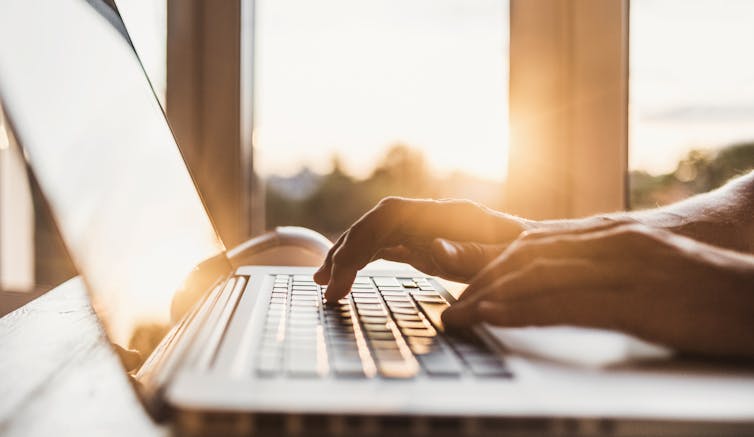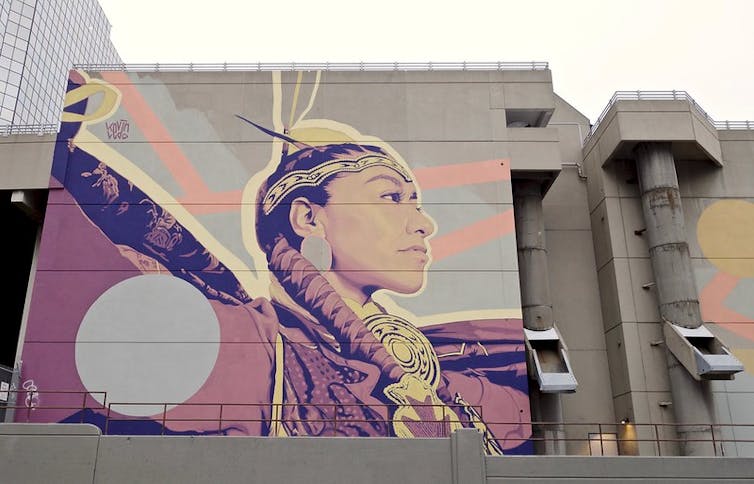As the second wave of the pandemic wears on, Indigenous students are facing challenges. At Athabasca University, we conducted a study to learn how Indigenous students at our university are doing with online learning in the pandemic. Our colleagues Martin Connors, professor of space sciences/physics and Barbara Reis, a master of education student, were part of our research team.
Athabasca University specializes in and has been an early adopter of distance education, so Athabasca's contemporary online learners did not face an abrupt switch to online learning because of the pandemic. We asked students who self-identify as Indigenous to explain the effects of the COVID-19 pandemic, the challenges and barriers they face in an online learning environment and the adaptations they have made.
While this project studied the immediate impact of the educational disruptions of the pandemic at our university, the findings are relevant to all Canadian universities whose responses need to take into account the impact of the pandemic on Indigenous learners.

(Shutterstock)
Financial, internet barriers
Athabasca University has 3,849 Indigenous students who self-identify as First Nations, Métis, non-status and Inuit. These students live in cities, towns and Indigenous territories across Canada, the northern part of Turtle Island. This spectrum of indigeneity was evident among respondents to our survey.
One hundred and forty Indigenous students completed the online survey, six participated in a focus group and 16 took part in interviews. Among the 16 students interviewed, 11 had to seek course extensions or drop courses due to the stress. Five experienced difficulties, but were able to complete their studies.

(Ricky Leong/Flickr), CC BY-NC-ND
Students are weathering an economic storm amid a pandemic. Alberta's decision to implement a performance-based funding model affects post-secondary institutions' budgets, and consequently, Athabasca University increased tuition by seven per cent in 2020 and announced a five per cent increase for 2021.
Before hearing about the recent increase, an Indigenous student who is also a parent explained her hard-pressed situation, saying: "I am really careful with my money when I do get the funding, because I never know if it's going to be a problem next time." There are many steps involved with securing a province of Alberta student loan and some students experience a gap between the time they need to pay tuition and the time funding arrives.
Of the 140 students who completed the survey, 14 per cent found it difficult to complete assignments due to financial stress, and more than half (53.5 per cent) experienced financial fluctuations and had difficulty completing assignments. Many other barriers to completing assignments included competing for household internet or living in a remote location where internet usage must meet the needs of many people living in one household. Some students relayed that internet costs were very high.
Athabasca University's online format was a reassurance to some Indigenous students. One student shared that knowing he was already set up for online learning "when everything else was going crazy" was helpful:
"We had stability at [Athabasca University] because we did not have to worry about how we were going to do our courses, we just continued because we knew how to do it … now everyone else is forced to do it," he said.
Understanding disease and historical trauma
Indigenous students are anxious about becoming infected with COVID-19 and passing it on to others. Over the winter, numbers surged, hitting Indigenous communities in Alberta hard. During individual interviews, we asked questions about infectious disease, because the past affects the present day, and there are lessons to be learned.
We asked students about their knowledge of the historical past of smallpox-infected blankets and handkerchiefs and the historical treatment and neglect of Indigenous children in residential schools where tuberculosis and neglect caused sickness and deaths.
One student explained:
"My mom's dad had 13 brothers and sisters, and he lost 11 of them to tuberculosis … they were originally from Northern Saskatchewan. And the time that the tuberculosis outbreak was happening, they had to move closer to Prince Albert to be closer to their kids who were in the hospital, and they ended up getting stuck there, because that was when the Indian agent instituted the need to have a pass to travel around. They had to have a pass to go anywhere. So, we ended up getting stuck on [another] reserve that we now call home but that wasn't their original home."
Historical trauma of infectious disease and displacement are not something Indigenous people get over; it is something passed on that we learn to understand and move through.
How to support students
The pandemic has changed the way post-secondary institutions need to support Indigenous students and provide essential learning services. Through student responses we heard of many ways to do so.
When there is an emergency, communication is very important. Keeping the lines of communication open while responding to student questions is essential for learner success. Indigenous students suggested that it's important for university phone lines to remain open and e-mails should be returned promptly.
Students are in need of mental health support for anxiety and depression exacerbated by the pandemic. One student commented that our society tends to "put such a focus on acute care," while dragging its heels about investing long-term in services to address health inequities for Indigenous people. She was referring to Canada's distribution of vaccines. Elderly members of First Nations, Métis and Inuit communities were vaccinated in the first stage of Canada's COVID-19 vaccine rollout.

(Shutterstock)
The majority of students who spoke with a member of our team shared their experiences and difficulties. It helped them to have a person listening. During the focus group, when Indigenous students met virtually for the first time together, it was mentioned how novel it was to meet online to share personally together as Indigenous people. Technology in an online environment allows for some human connection via Microsoft Teams or Zoom, but it is not the same as being together grounded in ceremony and on the land.
When Indigenous people meet on the land, a fire is one symbol of sacred connection. Online, it is also important to nurture sacred space for Indigenous students to connect. Indigenous people with experience in guiding culturally safe talking circles in an online environment can work across distances and time zones to create such spaces. In an online sharing circle, it's about listening from the heart and sharing experiences. Each person holds space for one another and reminds each other how they belong by being present with one other.
Creating a sacred space in an online environment requires building trust and rapport. Listening to students with a caring heart builds trust and rapport during the era of reconciliation. ![]()
This article is republished from The Conversation under a Creative Commons license. Read the original article.